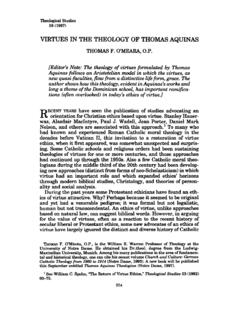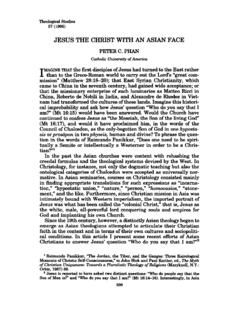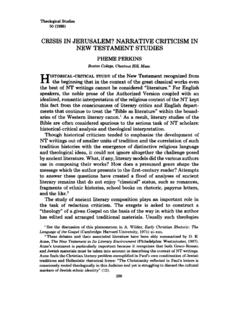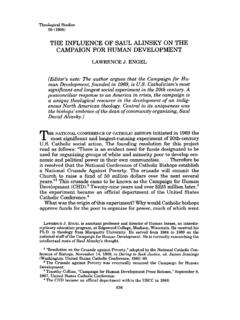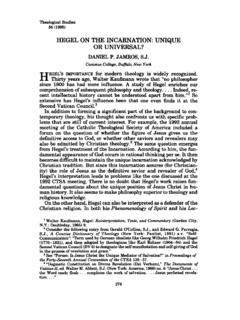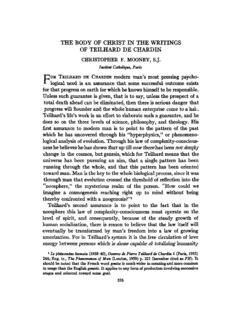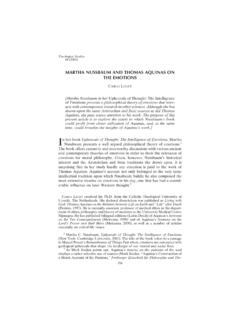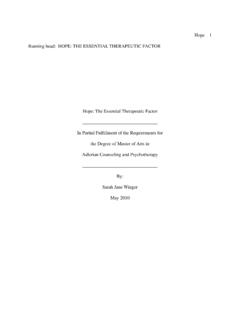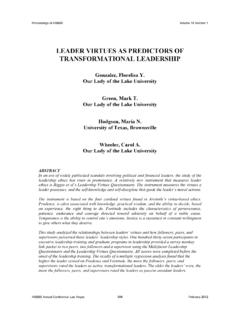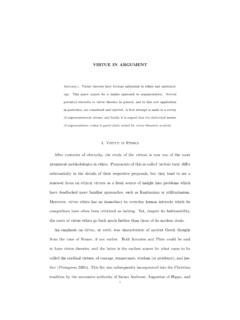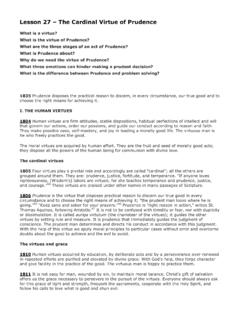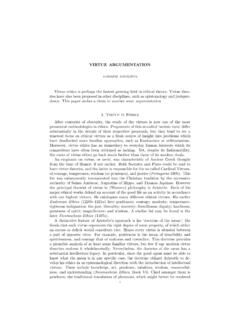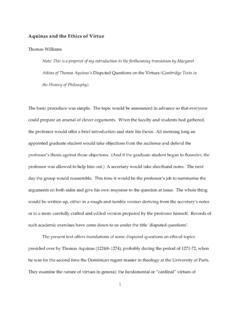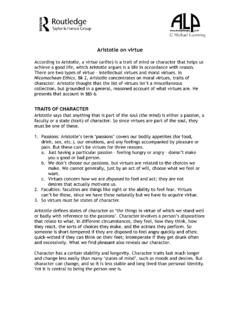Transcription of PROPOSING CARDINAL VIRTUES
1 Theological Studies 56 (1995) PROPOSING CARDINAL VIRTUES JAMES F. KEENAN, Weston Jesuit School of Theology RECENT WORK in virtue ethics, particularly sustained reflection on specific VIRTUES , makes it possible to argue that the classical list of CARDINAL VIRTUES (prudence, justice, temperance, and fortitude) is inad-equate, and that we need to articulate the CARDINAL VIRTUES more cor-rectly. With that end in view, the first section of this article describes the challenges of espousing CARDINAL VIRTUES today, the second consid-ers the inadequacy of the classical listing of CARDINAL VIRTUES , and the third makes a proposal.
2 Since VIRTUES , no matter how general, should always relate to concrete living, the article is framed by a case. CONTEMPORARY CHALLENGES Fifteen years ago, while preparing for priestly studies, I took my first exam in moral theology. The question was simple: resolve the case of Mrs. Bergmeier. Like all good cases, Mrs. Bergmeier's has under-gone several incarnations;1 thus some may be surprised to find her in a Nazi camp as opposed to a Soviet Gulag. In any event, the case that I was given was the following: Mrs.
3 Bergmeier is a married woman with several children and a husband who is ill. She has been arrested by the Nazis for assisting her Jewish neighbors and sentenced to six years without parole. After months in the camp, she learns that her husband's health is progressively declining due to his tending to the children, and that the children are not faring at all well due to their father's ailing state. She also learns something else: because of over-crowding, the camp releases pregnant women who are held for lesser crimes, like hers.
4 Aware of one particular guard who regularly makes outrageous advances on her, Mrs. Bergmeier, for the sake of her fam-ily, submits herself to him. Three months later a pregnant Mrs. Berg-meier returns to her family to care for her husband and children. When I took the exam, Catholic moral theologians responding to the case were grouped into two camps. The first simply reiterated a posi-tion held for several centuries that any act of sexual relations outside of marriage is always intrinsically wrong.
5 These called themselves deontologists. For them the case was simple: Mrs. Bergmeier's action was wrong. The second group found the case difficult; but, rather than challenge the first group, they debated among themselves. They were called proportionalists or revisionists. They raised two types of con-1 See the case debated over years in Richard McCormick, Notes on Moral Theology: 1965 through 1980 (Washington: University Press of America, 1981) 356-57, 512, 536, 753-54. 709 710 THEOLOGICAL STUDIES cerns.
6 The first type asked what the object of Mrs. Bergmeier's activity was. Was her action an extension of her marriage, or a contradiction of it? That is, did her activity compromise the institution of marriage? The second type concerned its effects on the guard, the husband, the children, and the new child. Acknowledging the guard's own evident wickedness, did she further compromise the reprobate by engaging him in illicit activity? Did she betray her husband? How would her children understand this new child?
7 What would life be like for this child born under such tragic circumstances? Despite these considerations, nowhere did anyone ask how this ac-tion affected Mrs. Bergmeier. Instead, the entire case concerned how her action affected others. Reflection on this omission leads to the question: What should be at the center of any discussion involving the famous case of Mrs. Bergmeier? Should the acts of intercourse and the effects of those acts be at the center of ethical discussion, as they were for the deontologists and the proportionalists?
8 2 Or should Mrs. Berg-meier be at the center? Placing the moral agent and not moral action or its consequences at the center of moral reflection distinguishes a third school of moral reasoning called virtue ethics. Long before William Bennett, theologians and philosophers were seeking a new method of ethics that would be agent based. In 1973, with its premiere issue, the Journal of Religious Ethics published a debate between those advocating an act-based ethics and those advo-cating a person-based or virtue In 1981 Alasdair Maclntyre published After Virtue, probably the most influential book to date on the Since that time, what was once a select interest has become a very productive enterprise.
9 Thus we find in 1987 an already outdated 36-page "selected bibliography" of philosophical essays on And in more recent years, a number of extensive review essays have made their appearance, in the American Philosophical Quarterly* the 2 Some might reject the suggestion that proportionalists are fundamentally act-oriented ethicists and not agent-oriented. But proportionalists like Janssens, McCor-mick, and Schuller have always written about the premoral or ontic values of acts and have not invoked the anthropological standards of the VIRTUES .
10 See Readings in Moral Theology No. 1: Moral Norms and Catholic Tradition, ed. Charles E. Curran and Richard A. McCormick (New York: Paulist, 1979). 3 See Frederick Carney, "The Virtue-Obligation Controversy," Journal of Religious Ethics 1 (1973) 5-19; William Frankena, "The Ethics of Love Conceived as an Ethics of Virtue," ibid. 21-31. Carney, "On Frankena and Religious Ethics," Journal of Religious Ethics 3 (1975) 7-26; Frankena, "Conversations with Carney and Hauerwas," ibid. 45-62; Stanley Hauerwas, "Obligation and Virtue Once More," ibid.
